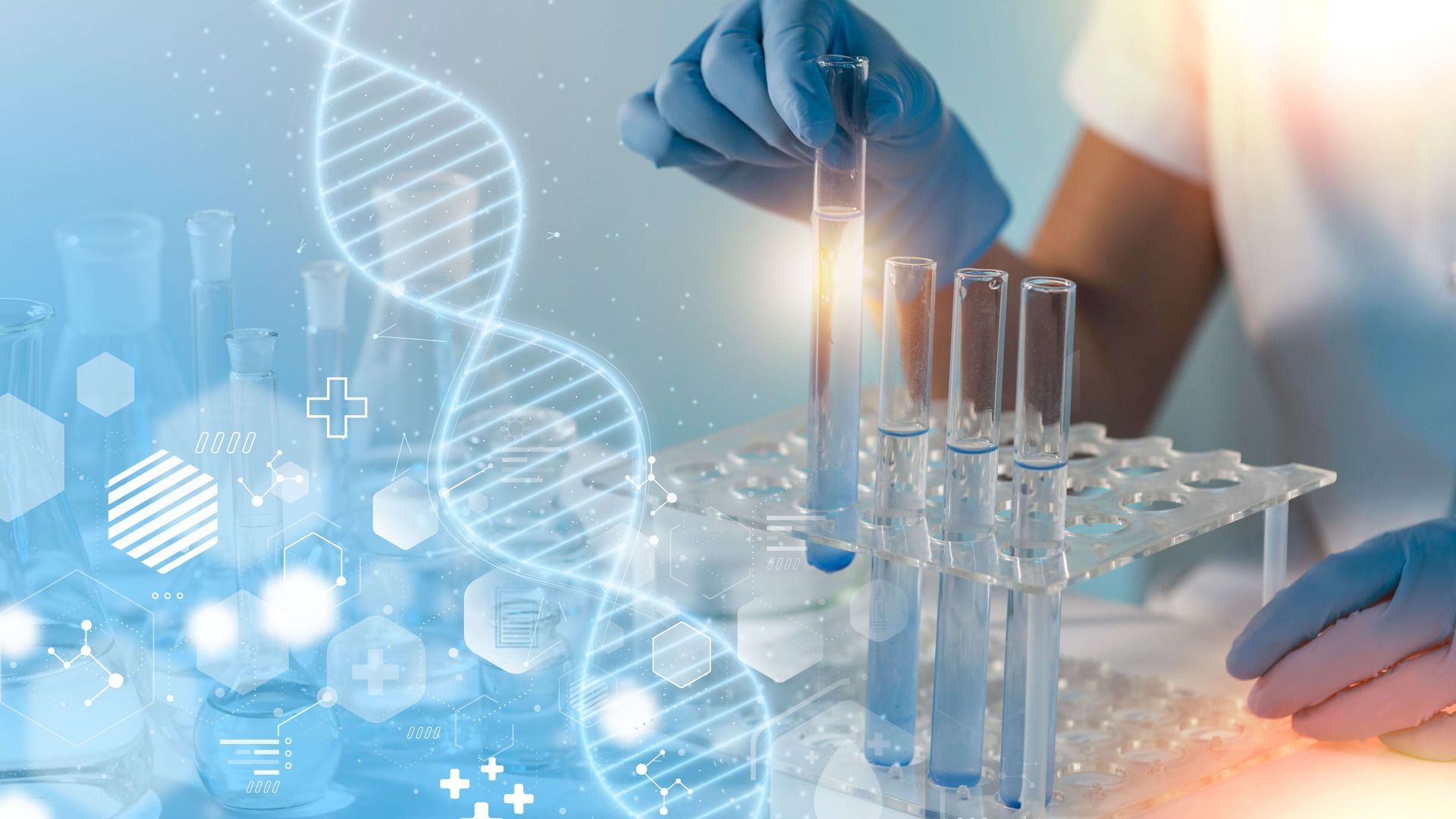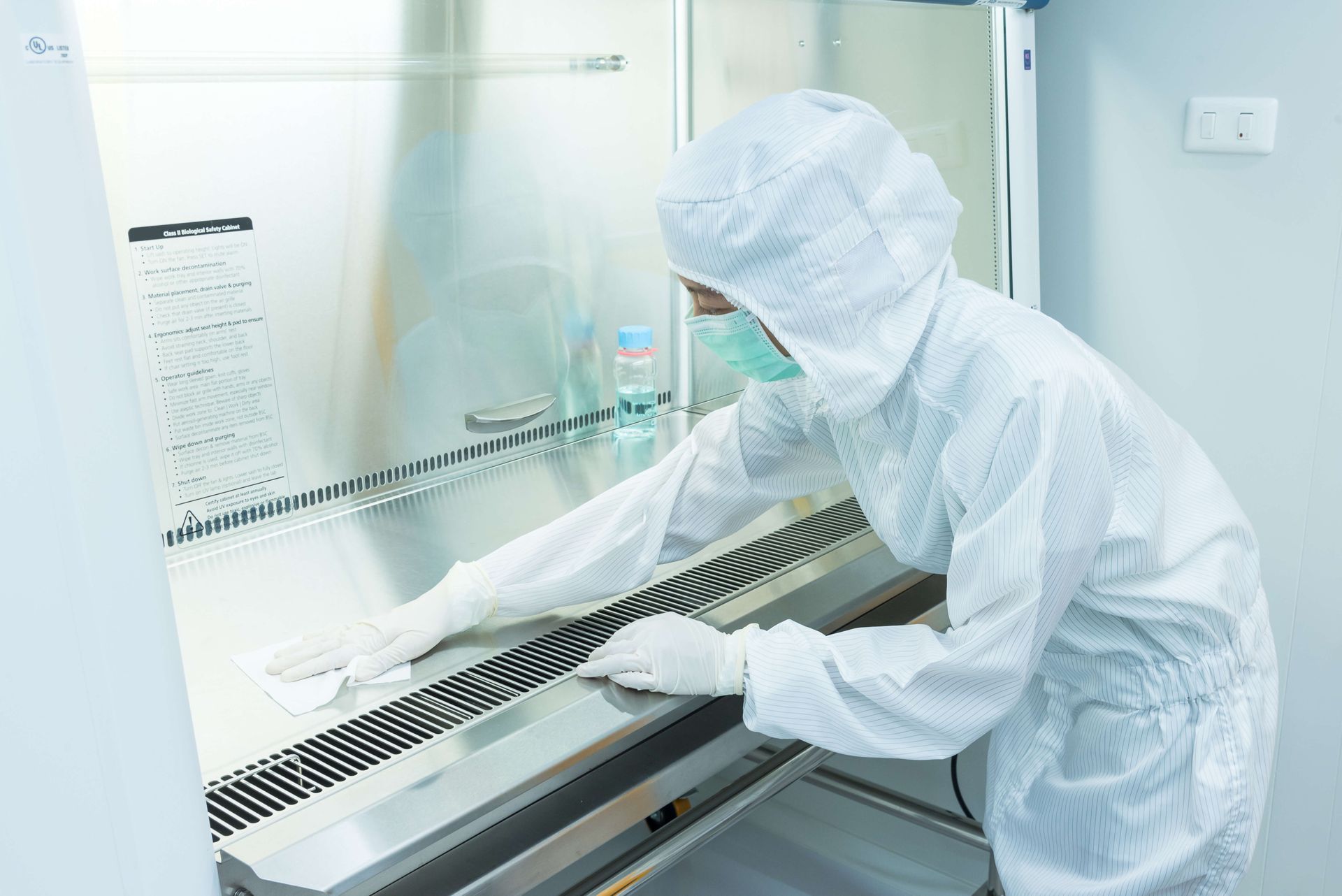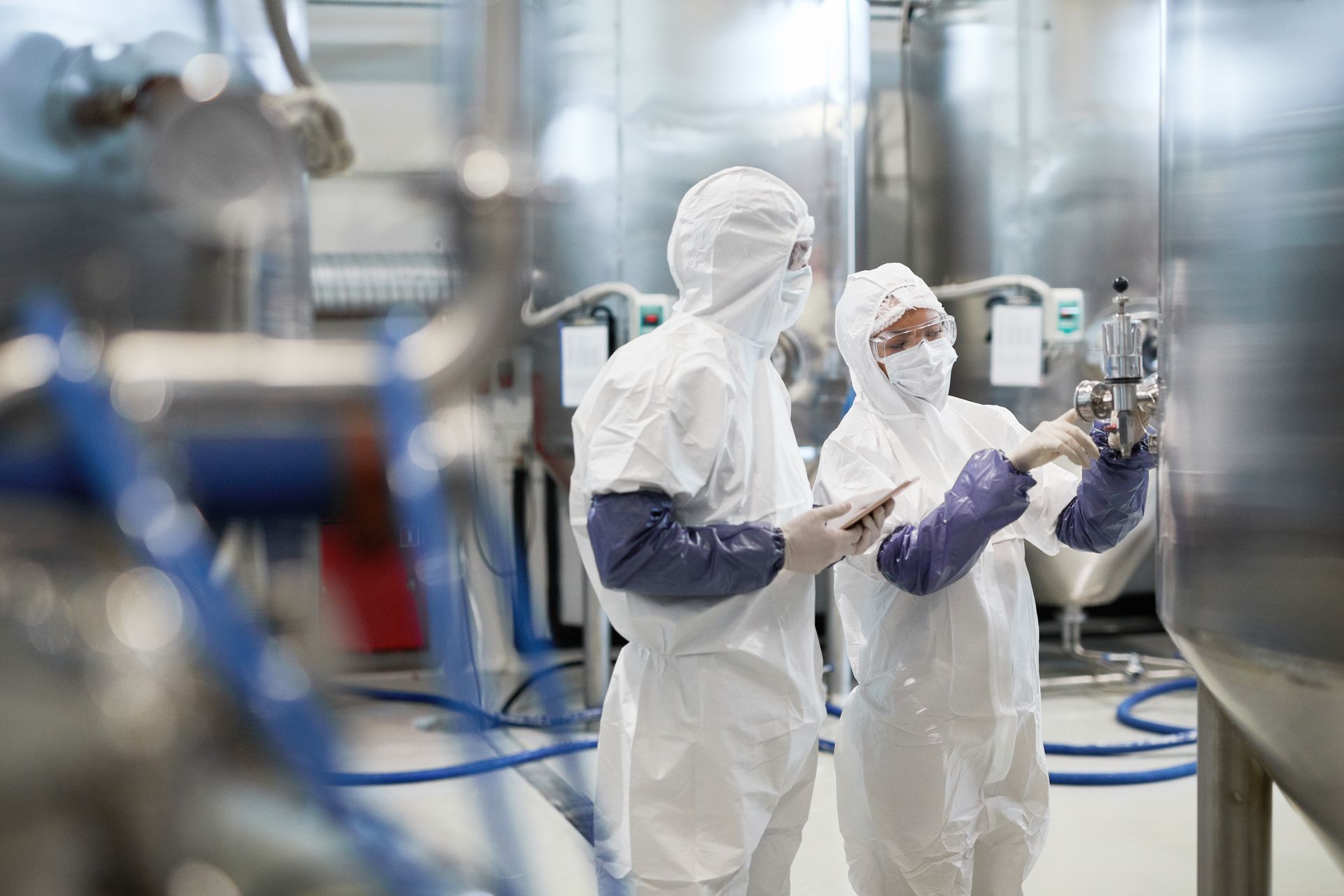The Role of Cleanrooms in Biotechnology Research

Introduction
Biotechnology is one of the most innovative and rapidly advancing fields, spanning diverse areas including pharmaceuticals, genetic research, agricultural development, and environmental biotechnology. As the field pushes the boundaries of scientific discovery, the need for specialized environments that can maintain the highest levels of sterility and precision becomes even more critical. This is where cleanrooms come into play.
In biotechnology research, cleanrooms provide a controlled environment that ensures the integrity of experiments, the safety of research subjects, and the consistency of results. These environments are specifically designed to minimize contamination from airborne particles, microorganisms, and other potential pollutants, which is essential for ensuring the validity and success of biotechnology research.
In this article, we will explore the role of cleanrooms in biotechnology research, the specific functions they serve, the types of research that benefit from cleanroom environments, and the various standards and technologies used to maintain the necessary conditions for cutting-edge biotechnological advancements.
What is a Cleanroom?
A cleanroom is a controlled environment where the level of contamination by particles, chemicals, and microorganisms is minimized to the greatest extent possible. Cleanrooms use specialized ventilation systems, air filtration methods, and carefully designed structures to maintain these sterile conditions. The goal of a cleanroom is to provide an environment that supports the integrity and safety of sensitive processes and materials, whether in a laboratory, manufacturing facility, or research space.
Cleanrooms are classified based on the concentration of airborne particles, with standards such as ISO 14644-1 categorizing them into different classes. The lower the class number, the cleaner the room. For example, ISO Class 5 is a very clean environment, suitable for delicate and high-precision work, while ISO Class 7 or 8 may suffice for less critical tasks.
In biotechnology research, the need for cleanrooms is particularly vital because biological materials, experiments, and equipment are highly susceptible to contamination, which could lead to inaccurate results or failed experiments.
The Importance of Cleanrooms in Biotechnology Research
Biotechnology research often deals with sensitive materials such as cell cultures, viruses, DNA, proteins, and other biological substances that require highly controlled conditions to thrive. Even the smallest contaminant can disrupt biological processes, compromise results, or introduce harmful pathogens that could skew data. This is why the role of cleanrooms in biotechnology research cannot be overstated.
1. Minimizing Contamination Risks
Biotechnological experiments, especially those involving genetic engineering or tissue culture, are highly sensitive to contamination. A single particle of dust, a microorganism, or an uncontrolled variable could lead to faulty results, affecting not only the quality of the research but also the safety of products derived from this research. Cleanrooms mitigate these risks by offering a controlled environment where contaminants from air, surfaces, or personnel are minimized.
Contaminants can come from many sources: human skin cells, hair, clothing, the materials being used in research, and even airborne bacteria or mold. Cleanrooms maintain air quality by using HEPA (High-Efficiency Particulate Air) or ULPA (Ultra-Low Penetration Air) filters, which can trap particles as small as 0.3 microns. This ensures that the research environment remains free of contaminants that could compromise the biological materials under study.
2. Ensuring Safe Handling of Biological Materials
In biotechnology research, it is not only the environment that must be clean, but also the handling and manipulation of biological materials. Cleanrooms provide the safety needed to manage potentially dangerous substances, such as genetically modified organisms (GMOs), pathogens, or toxic chemicals, without risking contamination. The strict sterilization processes and air filtration systems help reduce the risks associated with handling hazardous materials.
For instance, in gene editing research, such as CRISPR, or in the production of genetically modified crops, cleanrooms ensure that laboratory personnel and the research itself are not exposed to harmful agents. Cleanrooms also provide containment measures to ensure that any harmful biological agents or GMOs do not accidentally contaminate the surrounding environment.
3. Optimizing Experimental Conditions
Many biotechnological processes require strict environmental conditions for success. Temperature, humidity, and airflow all need to be controlled to ensure the proper growth and behavior of biological materials. For instance, cell cultures often need a very specific temperature and humidity to grow effectively, and even small changes in these factors can drastically affect the results of an experiment.
Cleanrooms in biotechnology research are equipped with state-of-the-art HVAC systems that allow researchers to control the temperature, humidity, and airflow with extreme precision. These systems ensure that conditions inside the cleanroom remain within optimal ranges for biological growth or chemical reactions. This is particularly important for work involving pharmaceuticals or biopharmaceutical production, where even minor deviations can lead to the failure of experiments or loss of product batches.
4. Preventing Cross-Contamination Between Experiments
Cross-contamination is a significant risk in any research environment, and cleanrooms are designed to prevent this by implementing specific airflow patterns and pressure differentials. In biotechnology research, experiments often involve the manipulation of various biological materials, each with its own unique properties and susceptibility to contamination.
By utilizing specialized air filtration systems and laminar airflow designs, cleanrooms can maintain a clean environment around specific experiments and prevent cross-contamination between research materials. Cleanrooms often feature zones with different cleanliness levels, ensuring that less critical research areas do not compromise the more sterile zones.
Types of Biotechnology Research That Benefit from Cleanroom Environments
Biotechnology research encompasses a wide range of disciplines, many of which require cleanroom environments for their success. Some of the most notable areas of biotechnology research that benefit from cleanroom environments include:
1. Pharmaceutical and Biopharmaceutical Research
Cleanrooms play an indispensable role in pharmaceutical and biopharmaceutical research, particularly in the development and production of vaccines, biologics, and gene therapies. These types of research require stringent sterility to ensure that the final product is safe for human use. Cleanrooms provide an environment where researchers can perform tasks such as cell culture, protein purification, or drug formulation without worrying about contamination from airborne particles or pathogens.
Additionally, the production of sterile injectable drugs, medical devices, and diagnostic tools also requires cleanroom environments to prevent contamination during manufacturing. Cleanrooms ensure that all surfaces, air, and personnel are properly sanitized, minimizing the risk of product contamination that could lead to health hazards.
2. Genetic Engineering and CRISPR Research
Research involving genetic modification, particularly using tools like CRISPR (Clustered Regularly Interspaced Short Palindromic Repeats), is highly sensitive and must be conducted in highly controlled environments. Cleanrooms provide the controlled conditions necessary to maintain the integrity of genetic material and the accuracy of gene-editing techniques. Any contamination during genetic modification could lead to inaccurate results, poor experimental outcomes, or the accidental introduction of unintended genetic material.
Cleanrooms in genetic engineering research also help protect researchers from exposure to potentially hazardous materials such as viruses or genetically altered microorganisms, providing a safer working environment.
3. Cell and Tissue Culture Research
In biotechnology, cell and tissue culture are foundational techniques used in areas such as drug discovery, regenerative medicine, and cancer research. These delicate biological systems require strict environmental control, including optimal temperatures, humidity, and sterile conditions. Cleanrooms help provide the perfect environment for these cultures to thrive and ensure that they remain free from contaminants that could affect their growth or lead to false results.
4. Microbial Research and Fermentation
Microbial biotechnology, which includes areas like fermentation and the study of microorganisms for the production of biofuels, enzymes, and antibiotics, benefits greatly from cleanroom conditions. Microbial cultures and fermentation processes are highly sensitive to contamination, and cleanrooms provide the necessary environment to ensure that experiments proceed without interference from outside sources.
In these environments, cleanrooms ensure that unwanted microorganisms do not contaminate the research cultures, leading to invalid results or unintentional bacterial growth that could damage experiments or contaminate the final products.
Maintaining Cleanroom Standards in Biotechnology Research
In biotechnology research, cleanrooms are maintained according to strict standards to ensure they are effective in reducing contamination risks. These standards typically involve:
- ISO Classification: Cleanrooms are classified based on the number of particles allowed per cubic meter of air. For high-precision biotechnology work, rooms must meet stringent ISO 5 or ISO 6 standards, with very low levels of particulate contamination.
- Environmental Monitoring: Regular monitoring of temperature, humidity, pressure, airflow, and particle levels is critical to ensure the cleanroom remains within required specifications.
- Sterilization Protocols: Frequent cleaning and sterilization of surfaces, equipment, and air filtration systems are necessary to ensure that no biological contaminants remain in the environment.
- Personal Protective Equipment (PPE): Personnel working in cleanrooms must wear specialized protective gear, including gowns, gloves, face masks, and hair coverings, to prevent contamination from human sources.
Conclusion
Cleanrooms play a vital role in biotechnology research by providing the sterile and controlled environments necessary to ensure the integrity of experiments, the safety of biological materials, and the quality of final products. With applications ranging from pharmaceutical production to genetic engineering and microbial research, cleanrooms support critical biotechnology advancements by minimizing contamination risks, optimizing experimental conditions, and maintaining the safety of researchers.
As the field of biotechnology continues to evolve and expand, cleanrooms will remain integral to the success of research efforts, ensuring that the groundbreaking discoveries made in these environments are safe, effective, and reproducible. With the continuing emphasis on precision and safety, cleanroom technology and design will likely evolve further to meet the challenges of tomorrow’s biotechnology innovations.
Read more: All About Cleanrooms - The ultimate Guide






